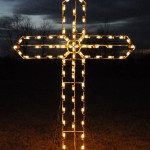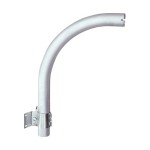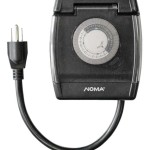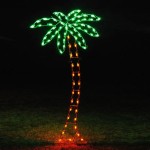Why Is My Outdoor LED Light Blinking?
A blinking outdoor LED light can be a source of frustration and concern. While LEDs are known for their longevity and efficiency, they are not immune to malfunctions. Understanding the potential causes can help homeowners troubleshoot the issue and determine the appropriate course of action.
Loose or Corroded Wiring
One of the most common reasons for a blinking LED light is a loose or corroded wire connection. Outdoor lights are exposed to the elements, making them susceptible to moisture and temperature fluctuations. Over time, these conditions can lead to corrosion on the wires and connection points. Corrosion disrupts the flow of electricity, causing the light to flicker or blink. Similarly, loose wiring can create an intermittent connection, resulting in a similar blinking effect.
Inspecting the wiring for signs of damage or looseness is a crucial first step. Ensure the connections are secure and free of corrosion. If corrosion is present, cleaning the contacts with a wire brush or replacing the affected wiring may be necessary. When working with electrical wiring, it's essential to turn off the power at the breaker box to prevent electrical shock.
Faulty Driver
LED lights require a driver to regulate the voltage supplied to the diodes. This driver acts as a transformer, converting the higher voltage from the mains power to the lower voltage required by the LED. A malfunctioning driver can cause a variety of issues, including blinking, dimming, or complete failure of the light. Drivers are particularly susceptible to power surges and voltage fluctuations.
Determining if the driver is the culprit can be more challenging than diagnosing a wiring issue. One method involves testing the light with a known good driver. If the light functions correctly with the replacement driver, the original driver is likely the source of the problem. Replacing the driver typically involves disconnecting the old driver and connecting the new one, following the manufacturer's instructions carefully.
Incompatible Dimmer Switch
While many LED lights are compatible with dimmer switches, some are not. Using an incompatible dimmer switch can cause the LED light to blink, flicker, or behave erratically. This incompatibility stems from the difference in how incandescent bulbs and LEDs regulate brightness. Incandescent bulbs dim by reducing the voltage, while LEDs typically dim by rapidly turning on and off, a process known as pulse-width modulation (PWM).
If the blinking issue coincides with the installation of a new dimmer switch, incompatibility is a likely cause. Check the packaging of both the LED light and the dimmer switch to ensure compatibility. If they are incompatible, replacing the dimmer switch with one specifically designed for LEDs should resolve the issue. LED-compatible dimmers are often labeled as such and may utilize different dimming technologies to provide smooth and flicker-free operation.
Overloading the Circuit
An overloaded circuit can cause voltage fluctuations, leading to blinking or flickering lights. This is especially true if multiple high-wattage appliances or lights are operating on the same circuit. When a circuit is overloaded, the available voltage is spread thinner, potentially causing issues with sensitive electronics, including LED lights.
To determine if an overloaded circuit is the cause, try turning off other appliances or lights on the same circuit. If the blinking stops, the circuit is likely overloaded. Solutions include moving some of the electrical load to a different circuit or upgrading the circuit breaker to handle a higher amperage. Consulting a qualified electrician is recommended for any circuit modifications.
Bulb Reaching End of Life
While LEDs have significantly longer lifespans than traditional incandescent bulbs, they are not immune to failure. As the LED reaches the end of its lifespan, it may begin to exhibit unusual behavior, such as blinking, dimming, or color shifting. This occurs due to degradation of the LED components over time.
If the blinking is accompanied by other symptoms like dimming or a noticeable change in color temperature, the bulb itself might be failing. Replacing the bulb with a new one is the simplest solution in this case. Ensure that the replacement bulb has the same specifications as the original, including voltage and wattage, to ensure proper function and avoid further issues.
Environmental Factors
External factors, such as extreme temperatures or moisture intrusion, can also affect the performance of outdoor LED lights. Extreme cold can impact the driver's performance, while excessive heat can damage the LED components. Moisture can cause corrosion and short circuits, leading to blinking or other malfunctions.
Protecting the light fixture from the elements can help mitigate these issues. Ensuring proper sealing and using weatherproof enclosures can prevent moisture ingress. Choosing lights specifically designed for outdoor use can also improve resilience to extreme temperatures.

How To Fix A Blinking Outdoor Led Light

How To Fix A Blinking Outdoor Led Light

How To Fix A Blinking Outdoor Led Light

Led Light Fixtures Flickering The Causes And Solutions To Problem

How To Fix A Blinking Outdoor Led Light

How To Fix A Blinking Outdoor Led Light

8 Common Problems With Led Lighting 2024 How To Fix

Why Is Outdoor Led Flood Light Flashing On And Off

Why Do Led Flood Lights Flashing On And Off How To Fix Ledsuniverse

Led Light Flickering Why Do Lights Flicker How To Fix It Lighting Info







